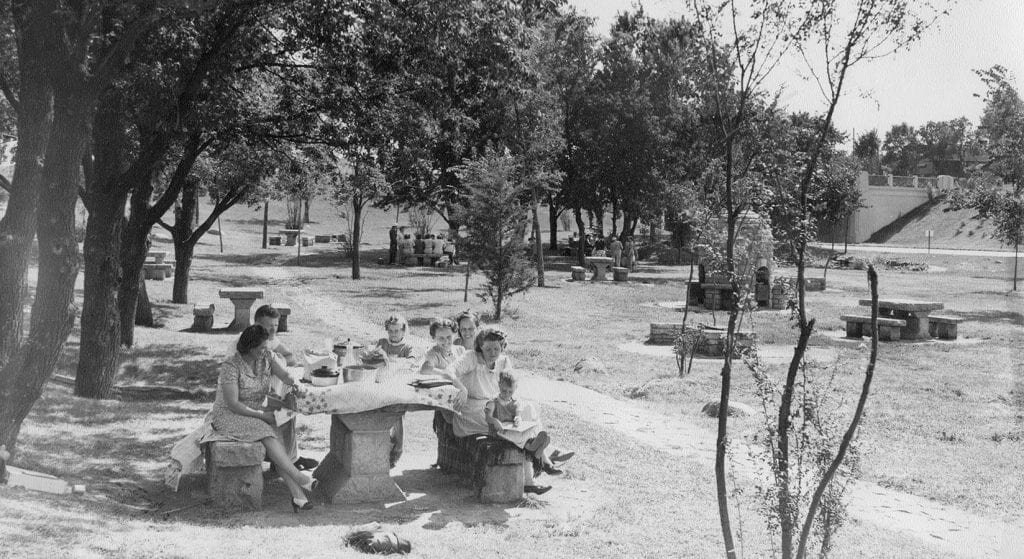If You Love Lilacs
Minnesotans love lilacs. They’re hardy plants that can survive our harsh winters and they’re some of the first flowers to bloom in the spring. The smell of lilacs fills the air at the perfect time, right when it’s warm enough to open the windows and let the fresh air in. The pink, purple, white, and blue flowers only stick around for about three weeks in the spring so there’s no time to waste. Let me suggest three of my favorite places to find lilacs in the Twin Cities.
WHERE TO FIND LILACS
LILAC PARK
Many Minnesotans drive highway 100 on a regular basis and would never think of it as a top lilac destination, but in the beginning it was planned to be just that. In 1935, the Highway Department was planning a new “beltline” that would connect the cattle farms of the northern and western suburbs to the processors in St. Paul. The 12.5 mile stretch from Robbinsdale to Edina would be the original Highway 100.
Reporters at the Minneapolis Journal newspaper were seeing stories about crowds of visitors to the cherry blossoms in Washington, DC. They saw an opportunity to create a similar destination closer to home. They proposed planting lilacs all along the new stretch of road as well as creating 7 roadside stops to enhance the journey.
The road work, landscaping and stonework for the project were all a part of President Roosevelt’s Works Progress Administration (WPA). The WPA created jobs for skilled and unskilled laborers still out of work after the Depression. The Highway would be one of the largest WPA projects in the state, employing 1500 men PER DAY.
As for the lilacs - over 7,000 lilac bushes were planted along the highway and at the roadside parks.
After many years and many highway expansions only two of the original seven roadside parks remain. Graeser Park, named after the highway project’s Chief Engineer Carl Graeser is in Robbinsdale and is in the process of being restored after years of neglect.
In St. Louis Park, Lilac Park has been restored and refreshed to its former glory. It’s 100 foot wall of purple and white lilacs bloom every May. The stone picnic benches are the perfect spot for a bite to eat or there is a large firepit with stone seating. As a bonus, the park is right next to the Nordic Ware outlet store!
Lilac Park lies in the shadow of the landmark Nordic Ware tower that bears their logo. To learn more about the surprising history and importance of the tower, read my post - “Nordic Where?”
If you love lilacs and want to support the restoration of other parks that are a part of Lilac Way, you can learn more at Restore Lilac Way.
THE MINNESOTA LANDSCAPE ARBORETUM
For the biggest variety of species, types and colors of lilacs in one place, choose the Minnesota Landscape Arboretum. The Hueg Lilac Collection is the Arboretum's oldest collection. It was designed by Lee Snyder, the son of the first Director of the Arboretum, and planted almost before the land was purchased in 1958. The collection contains several different types of lilacs and their cultivars, including common, French hybrids, Chinese, Preston, Peking, and Japanese. There are 26 species, 123 cultivars and a total of 179 specimens.
At the top of a nearby hill is the Anne Blackman Garden and lilac information kiosk. The kiosk gives information on lilac types and cultivation. It’s a great resource in case you are thinking about planting your own!
YARDS AND BOULEVARDS
Speaking of planting your own, the absolute best way to see (and smell) lilacs is to get outside and take a walk or a drive. Lilacs are so popular in Minnesota that you can’t go more than a couple of blocks before spotting one in a yard, boulevard or alley*. Lakewood Cemetery has lilacs lining Dupont Avenue South between 36th and Rose Garden Way. Boom Island Park has a few lilacs near the lighthouse. Lyndale Park Gardens, adjacent to the Rose Garden at Lake Harriet has a lilac restoration project in progress. There are lots of lilac bushes near sidewalks along 36th Street South. Once you start looking you’ll see them everywhere!
*Be sure to ask permission before entering private property - but once you have it, be sure to bury your face in the soft blooms and take big, deep breaths! Enjoy!
It’s easy to take our lilacs for granted because they are everywhere in the midwest - but remember, they don’t grow in warmer climates. So that’s ONE thing the snow birds don’t get to enjoy in the winter!
Where are your favorite lilacs? Which color is your favorite? Let me know in the comments!














